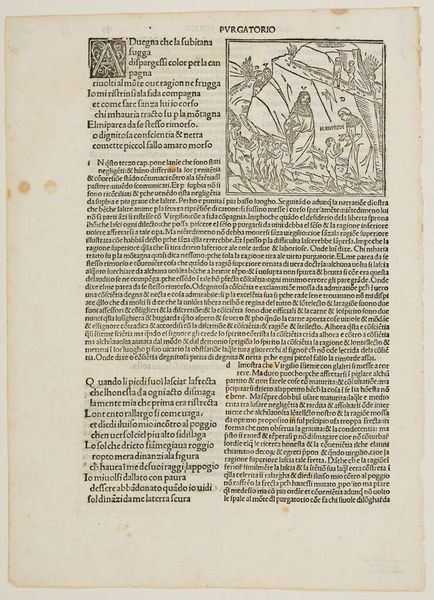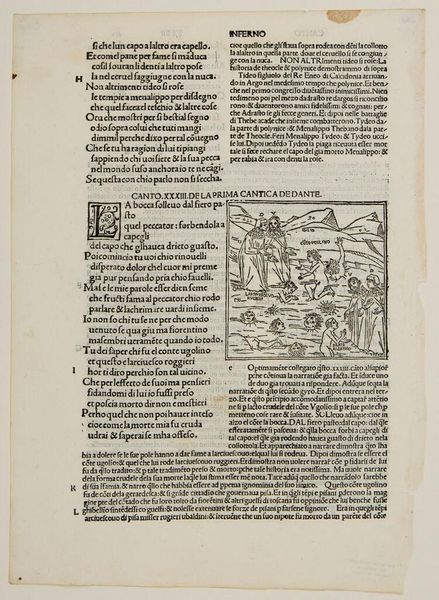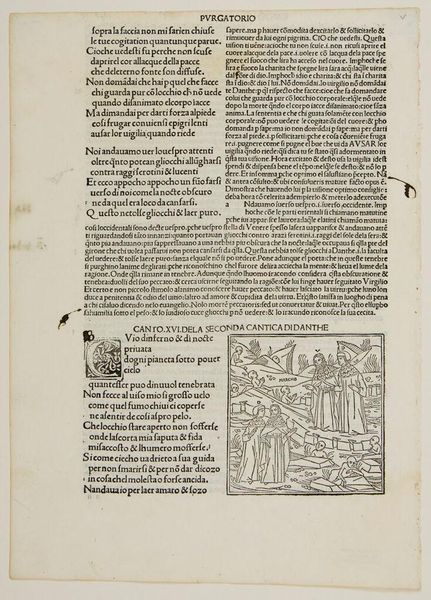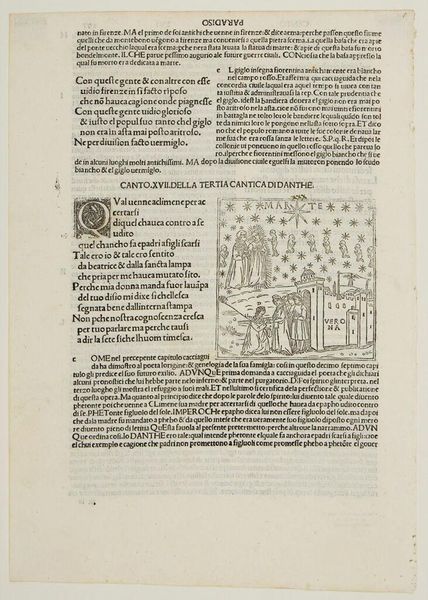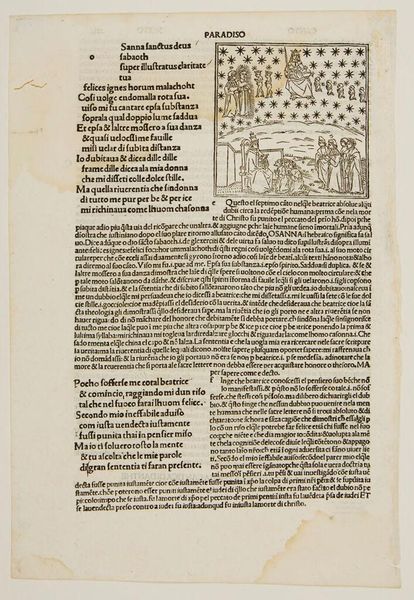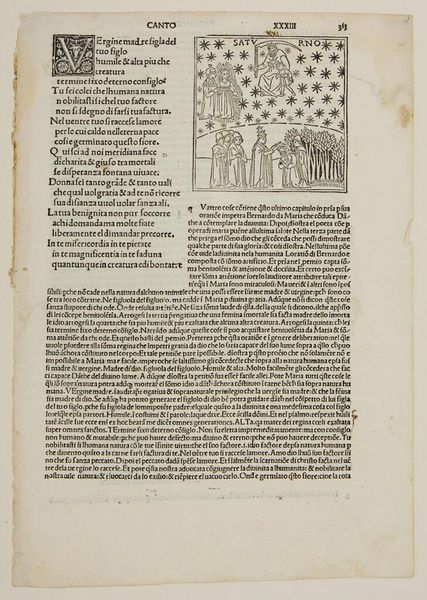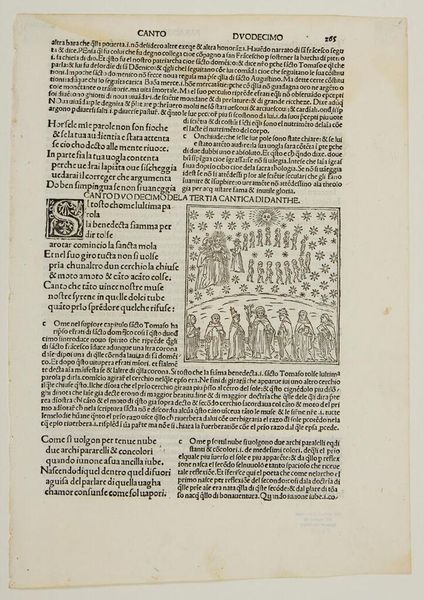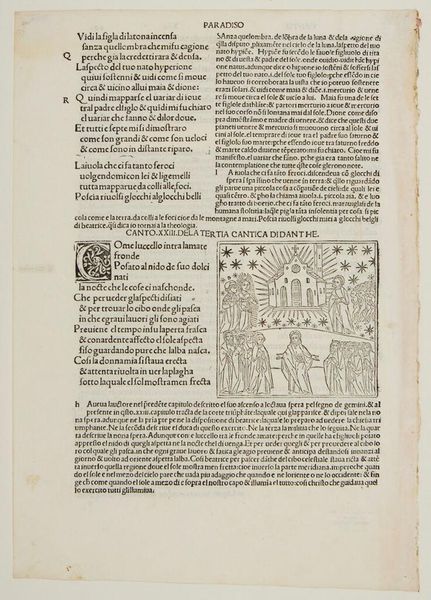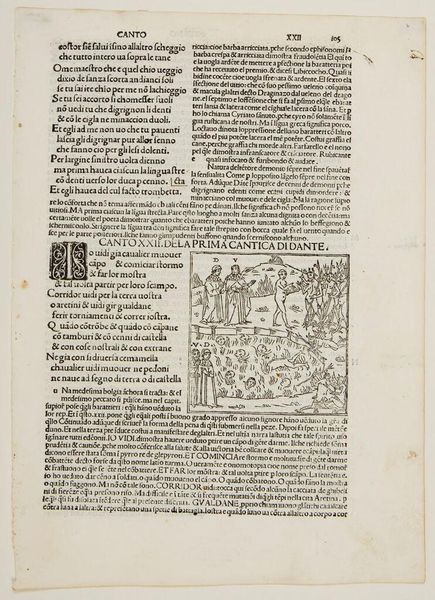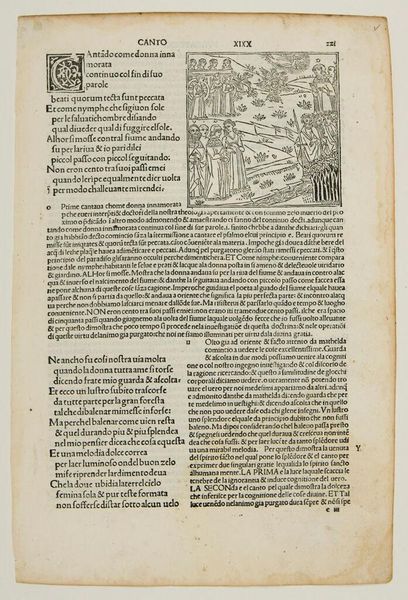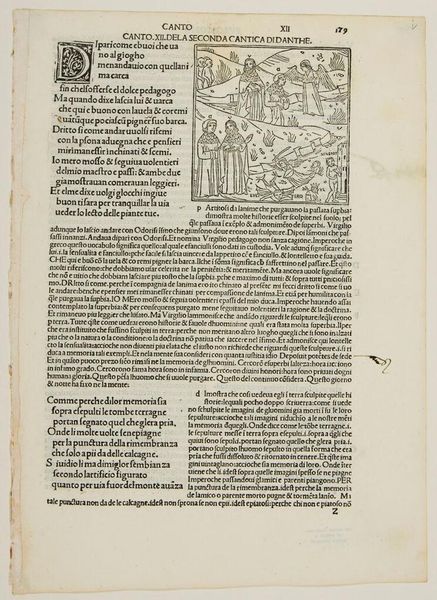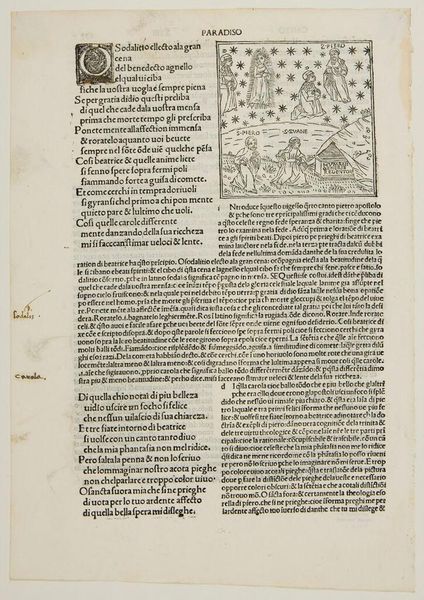
Illustration from Dante's Divine Comedy. Venice, Jacob del Burgofranco for Giunta, 1529 c. 16th century
0:00
0:00
Copyright: CC0 1.0
Curator: This is an illustration from an early edition of Dante’s Divine Comedy, printed in Venice in 1529. The artist is anonymous, but the woodcut itself offers a fascinating glimpse into the visual culture surrounding this epic poem. Editor: It feels rather cramped; the text dominates the page, and the illustration seems almost secondary. The figures are stylized and a bit awkward, but there's also a certain charm to their simplicity. Curator: The crowding is due to the cultural role of printed books at the time. It was expensive to print and bind these texts, so the image serves a pedagogical function more than an aesthetic one. Editor: I agree. And to that point, the image has a distinct narrative function. We see Dante at the bottom, ready to ascend through the spheres and into the heavens above. The allegorical animals seem to signify both zodiacal and biblical imagery, the ram in the upper tier is a direct reference to Aries! Curator: Exactly. And this reflects the complex intersection of classical, medieval, and emerging Renaissance thought that defined Dante’s era and the early 16th century, when this book was printed. Editor: So, in essence, this is not just a visual aid, but a cultural artifact. It reflects the way readers in the 16th century were engaging with Dante's complex, multifaceted work. A nice, little object lesson.
Comments
No comments
Be the first to comment and join the conversation on the ultimate creative platform.
